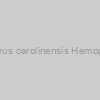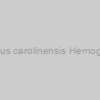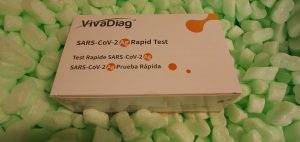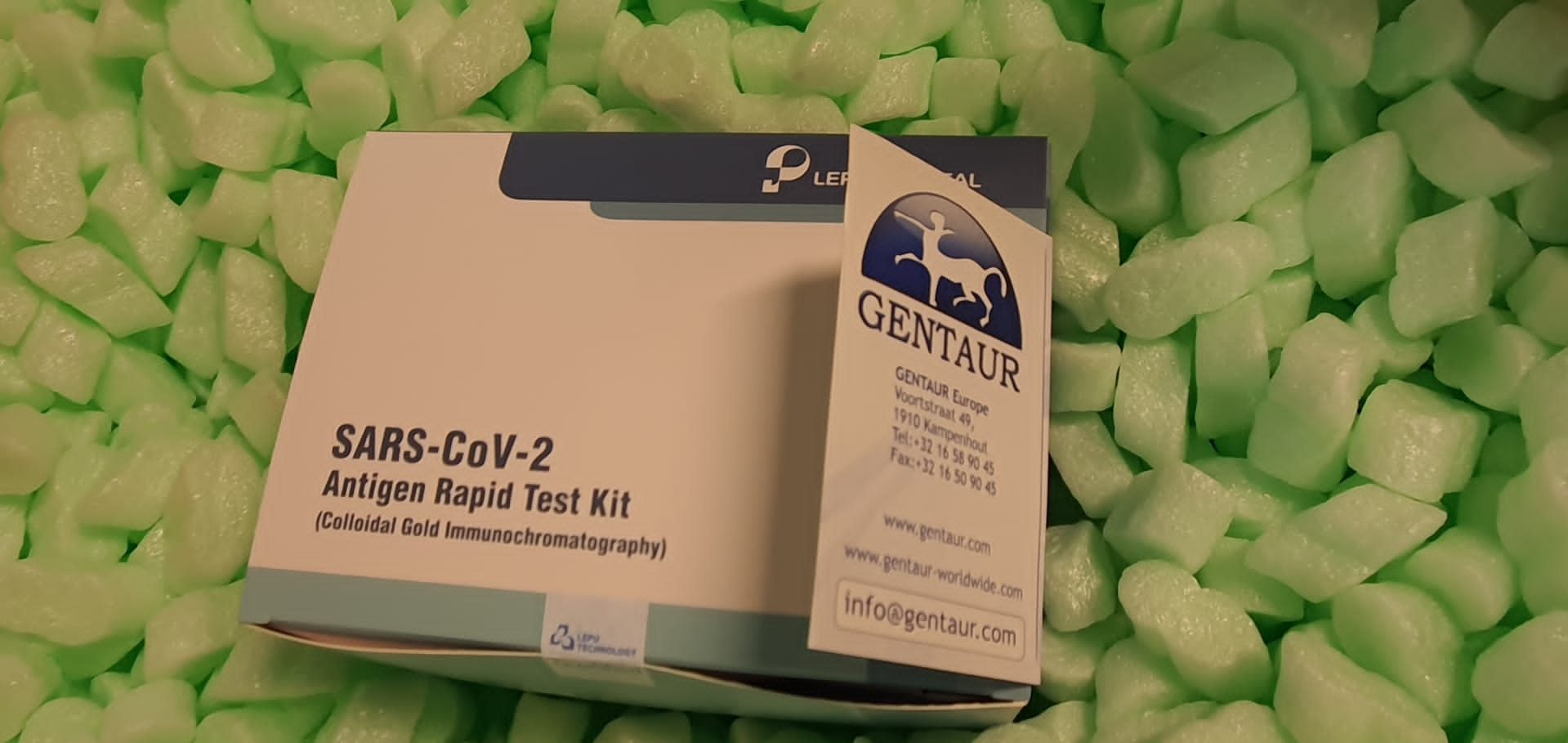What makes a species capable of colonize novel environments? This query is vital to grasp the dynamics of adaptive radiations and ecological area of interest shifts, however the mechanisms that underlie growth into novel habitats stay poorly understood at a genomic scale. Lizards from the genus Anolis are usually tropical, and the inexperienced anole (Anolis carolinensis) constitutes an exception because it expanded into temperate North America from subtropical Florida. Thus, we used the inexperienced anole as a mannequin to research signatures of choice related to colonization of a brand new atmosphere, particularly temperate North America. To this finish, we analysed 29 whole-genome sequences, masking all the native vary of the species.
We used a mix of latest strategies to quantify each constructive and balancing choice in northern populations, together with FST outlier strategies, machine studying and ancestral recombination graphs. We naively scanned for genes of curiosity and assessed the overlap between a number of checks. Strikingly, we recognized many genes concerned in behaviour, suggesting that the latest profitable colonization of northern environments might have been linked to behavioural shifts in addition to physiological adaptation. Utilizing a candidate genes technique, we decided that genes concerned in response to chilly or behaviour displayed extra often indicators of choice, whereas controlling for native recombination charge, gene clustering and gene size.
The Epigenetic Signature of Colonizing New Environments in Anolis Lizards.
Founder populations typically present fast divergence from supply populations after colonizing new environments. Epigenetic modifications can mediate phenotypic responses to environmental change and could also be an vital mechanism selling fast differentiation in founder populations. Whereas many long-term research have explored the extent to which divergence between supply and founder populations is genetically heritable versus plastic, the function of epigenetic processes throughout colonization stays unclear. To research epigenetic modifications in founding populations, we experimentally colonized eight small Caribbean islands with brown anole lizards (Anolis sagrei) from a standard supply inhabitants.
We then quantitatively measured genome-wide DNA methylation in liver tissue utilizing lowered illustration bisulfite sequencing of people transplanted onto islands with high- versus low-habitat high quality. We discovered that lizard intercourse and habitat high quality defined a major proportion of epigenetic variation. Differentially methylated cytosines mapped to genes that encode proteins with features more likely to be related to habitat change (e.g., sign transduction, immune response, circadian rhythm). This research gives experimental proof of a relationship between epigenetic responses and the earliest phases of colonization of novel environments in nature and means that habitat high quality influences the character of those epigenetic modifications.
Genetic Content material of the Neo-Intercourse Chromosomes in Ctenonotus and Norops (Squamata, Dactyloidae) and Degeneration of the Y Chromosome as Revealed by Excessive-Throughput Sequencing of Particular person Chromosomes.
Pleurodont lizards are characterised by an historical system of intercourse chromosomes. Together with stability of the central part of the system (homologous to the X chromosome of Anolis carolinensis [Dactyloidae], ACAX), in some genera the ancestral intercourse chromosomes are fused with microautosomes, forming neo-sex chromosomes. The genus Ctenonotus (Dactyloidae) is characterised by a number of X1X1X2X2/X1X2Y intercourse chromosomes.
Based on cytogenetic information, the massive neo-Y chromosome is fashioned by fusion of the ancestral Y chromosome with 2 microautosomes (homologous to ACA10 or ACA11 and ACA12), the X1 chromosome is fashioned by fusion of the ancestral X chromosome with the autosome homologous to ACA10 or ACA11, and the X2 chromosome is homologous to autosome ACA12. As well as, we discovered signatures of balancing choice at immune genes in all investigated genetic teams, but in addition at genes concerned in neuronal and anatomical improvement. Physique weights and meals consumption have been monitored and fecal samples have been collected for high-throughput 16S rRNA gene amplicon sequencing and analytical chemistry at days zero and 15.
To find out extra exactly the content material and evolution of the Ctenonotus intercourse chromosomes, we sequenced flow-sorted chromosomes (each intercourse chromosomes and microautosomes as management) of two species with an identical system: C. pogus and C. sabanus. Our outcomes point out that the translocated a part of the X1 is homologous to ACA11, X2 is homologous to ACA12, and the Y incorporates segments homologous to each ACA11 and ACA12. Molecular divergence estimates counsel that the ancestral X-derived half has fully degenerated within the Y of Ctenonotus, much like the degeneration of the Norops sagrei Y chromosome (Dactyloidae). The newly added areas present lack of DNA content material, however with out degeneration of the conserved areas. We hypothesize that the translocation of autosomal blocks onto intercourse chromosomes facilitated fast degeneration of the pseudoautosomal area on the ancestral Y.
) Recombinant Anolis carolinensis Rhodopsin (RHO) |
|
MBS7028555-5x01mg |
MyBiosource |
5x0.1mg |
EUR 11780 |
 Recombinant Anolis carolinensis Melanotropin alpha |
|
MBS1126167-005mgBaculovirus |
MyBiosource |
0.05mg(Baculovirus) |
EUR 875 |
 Recombinant Anolis carolinensis Melanotropin alpha |
|
MBS1126167-005mgEColi |
MyBiosource |
0.05mg(E-Coli) |
EUR 490 |
 Recombinant Anolis carolinensis Melanotropin alpha |
|
MBS1126167-005mgYeast |
MyBiosource |
0.05mg(Yeast) |
EUR 695 |
 Recombinant Anolis carolinensis Melanotropin alpha |
|
MBS1126167-02mgEColi |
MyBiosource |
0.2mg(E-Coli) |
EUR 640 |
 Recombinant Anolis carolinensis Melanotropin alpha |
|
MBS1126167-05mgEColi |
MyBiosource |
0.5mg(E-Coli) |
EUR 700 |
 Recombinant Anolis carolinensis Red-sensitive opsin |
|
MBS1138664-INQUIRE |
MyBiosource |
INQUIRE |
Ask for price |
, partial) Recombinant Anolis carolinensis Rhodopsin (RHO), partial |
|
MBS7056789-INQUIRE |
MyBiosource |
INQUIRE |
Ask for price |
 Recombinant Anolis carolinensis Red-sensitive opsin |
|
MBS7036112-002mg |
MyBiosource |
0.02mg |
EUR 1690 |
 Recombinant Anolis carolinensis Red-sensitive opsin |
|
MBS7036112-01mg |
MyBiosource |
0.1mg |
EUR 2645 |
 Recombinant Anolis carolinensis Red-sensitive opsin |
|
MBS7036112-5x01mg |
MyBiosource |
5x0.1mg |
EUR 11865 |
 Recombinant Anolis carolinensis Blue-sensitive opsin |
|
MBS1243123-INQUIRE |
MyBiosource |
INQUIRE |
Ask for price |
 Recombinant Anolis carolinensis Blue-sensitive opsin |
|
MBS7036111-002mg |
MyBiosource |
0.02mg |
EUR 1670 |
 Recombinant Anolis carolinensis Blue-sensitive opsin |
|
MBS7036111-01mg |
MyBiosource |
0.1mg |
EUR 2630 |
 Recombinant Anolis carolinensis Blue-sensitive opsin |
|
MBS7036111-5x01mg |
MyBiosource |
5x0.1mg |
EUR 11790 |
 Recombinant Anolis carolinensis Red-sensitive opsin, partial |
|
MBS7060668-INQUIRE |
MyBiosource |
INQUIRE |
Ask for price |
 Recombinant Anolis carolinensis Blue-sensitive opsin, partial |
|
MBS7061224-INQUIRE |
MyBiosource |
INQUIRE |
Ask for price |
) Recombinant Anolis carolinensis Dual specificity phosphatase DUPD1 (DUPD1) |
|
MBS1107230-002mgBaculovirus |
MyBiosource |
0.02mg(Baculovirus) |
EUR 1135 |
) Recombinant Anolis carolinensis Dual specificity phosphatase DUPD1 (DUPD1) |
|
MBS1107230-002mgEColi |
MyBiosource |
0.02mg(E-Coli) |
EUR 720 |
) Recombinant Anolis carolinensis Dual specificity phosphatase DUPD1 (DUPD1) |
|
MBS1107230-002mgYeast |
MyBiosource |
0.02mg(Yeast) |
EUR 890 |
) Recombinant Anolis carolinensis Dual specificity phosphatase DUPD1 (DUPD1) |
|
MBS1107230-01mgEColi |
MyBiosource |
0.1mg(E-Coli) |
EUR 865 |
) Recombinant Anolis carolinensis Dual specificity phosphatase DUPD1 (DUPD1) |
|
MBS1107230-01mgYeast |
MyBiosource |
0.1mg(Yeast) |
EUR 1040 |
 Recombinant Hogna carolinensis M-lycotoxin-Hc2a |
|
MBS1082013-005mgBaculovirus |
MyBiosource |
0.05mg(Baculovirus) |
EUR 885 |
 Recombinant Hogna carolinensis M-lycotoxin-Hc2a |
|
MBS1082013-005mgEColi |
MyBiosource |
0.05mg(E-Coli) |
EUR 510 |
 Recombinant Hogna carolinensis M-lycotoxin-Hc2a |
|
MBS1082013-005mgYeast |
MyBiosource |
0.05mg(Yeast) |
EUR 705 |
 Recombinant Hogna carolinensis M-lycotoxin-Hc2a |
|
MBS1082013-02mgEColi |
MyBiosource |
0.2mg(E-Coli) |
EUR 665 |
 Recombinant Hogna carolinensis M-lycotoxin-Hc2a |
|
MBS1082013-05mgEColi |
MyBiosource |
0.5mg(E-Coli) |
EUR 710 |
 Recombinant Hogna carolinensis M-lycotoxin-Hc1a |
|
MBS1066683-005mgBaculovirus |
MyBiosource |
0.05mg(Baculovirus) |
EUR 885 |
 Recombinant Hogna carolinensis M-lycotoxin-Hc1a |
|
MBS1066683-005mgEColi |
MyBiosource |
0.05mg(E-Coli) |
EUR 505 |
 Recombinant Hogna carolinensis M-lycotoxin-Hc1a |
|
MBS1066683-005mgYeast |
MyBiosource |
0.05mg(Yeast) |
EUR 705 |
 Recombinant Hogna carolinensis M-lycotoxin-Hc1a |
|
MBS1066683-02mgEColi |
MyBiosource |
0.2mg(E-Coli) |
EUR 665 |
 Recombinant Hogna carolinensis M-lycotoxin-Hc1a |
|
MBS1066683-05mgEColi |
MyBiosource |
0.5mg(E-Coli) |
EUR 705 |
) Recombinant Sciurus carolinensis Cytochrome b (MT-CYB) |
|
MBS7021826-002mg |
MyBiosource |
0.02mg |
EUR 1455 |
) Recombinant Sciurus carolinensis Cytochrome b (MT-CYB) |
|
MBS7021826-01mg |
MyBiosource |
0.1mg |
EUR 2420 |
) Recombinant Sciurus carolinensis Cytochrome b (MT-CYB) |
|
MBS7021826-5x01mg |
MyBiosource |
5x0.1mg |
EUR 10840 |
 Recombinant Sciurus carolinensis Hemoglobin subunit beta |
|
MBS1212070-002mgBaculovirus |
MyBiosource |
0.02mg(Baculovirus) |
EUR 1070 |
 Recombinant Sciurus carolinensis Hemoglobin subunit beta |
|
MBS1212070-002mgEColi |
MyBiosource |
0.02mg(E-Coli) |
EUR 655 |
 Recombinant Sciurus carolinensis Hemoglobin subunit beta |
|
MBS1212070-002mgYeast |
MyBiosource |
0.02mg(Yeast) |
EUR 820 |
 Recombinant Sciurus carolinensis Hemoglobin subunit beta |
|
MBS1212070-01mgEColi |
MyBiosource |
0.1mg(E-Coli) |
EUR 760 |
 Recombinant Sciurus carolinensis Hemoglobin subunit beta |
|
MBS1212070-01mgYeast |
MyBiosource |
0.1mg(Yeast) |
EUR 960 |
 Recombinant Sciurus carolinensis Hemoglobin subunit alpha |
|
MBS1143327-002mgBaculovirus |
MyBiosource |
0.02mg(Baculovirus) |
EUR 1065 |
 Recombinant Sciurus carolinensis Hemoglobin subunit alpha |
|
MBS1143327-002mgEColi |
MyBiosource |
0.02mg(E-Coli) |
EUR 650 |
 Recombinant Sciurus carolinensis Hemoglobin subunit alpha |
|
MBS1143327-002mgYeast |
MyBiosource |
0.02mg(Yeast) |
EUR 815 |
 Recombinant Sciurus carolinensis Hemoglobin subunit alpha |
|
MBS1143327-01mgEColi |
MyBiosource |
0.1mg(E-Coli) |
EUR 750 |
 Recombinant Sciurus carolinensis Hemoglobin subunit alpha |
|
MBS1143327-01mgYeast |
MyBiosource |
0.1mg(Yeast) |
EUR 955 |
, partial) Recombinant Sciurus carolinensis Cytochrome b (MT-CYB), partial |
|
MBS7077525-INQUIRE |
MyBiosource |
INQUIRE |
Ask for price |
, partial) Recombinant Blarina carolinensis Cytochrome b (MT-CYB), partial |
|
MBS7095415-INQUIRE |
MyBiosource |
INQUIRE |
Ask for price |
) Recombinant Sciurus carolinensis Cytochrome c oxidase subunit 2 (MT-CO2) |
|
MBS1095654-INQUIRE |
MyBiosource |
INQUIRE |
Ask for price |
) Recombinant Sciurus carolinensis Cytochrome c oxidase subunit 2 (MT-CO2) |
|
MBS7021635-002mg |
MyBiosource |
0.02mg |
EUR 1520 |
) Recombinant Sciurus carolinensis Cytochrome c oxidase subunit 2 (MT-CO2) |
|
MBS7021635-01mg |
MyBiosource |
0.1mg |
EUR 2480 |
) Recombinant Sciurus carolinensis Cytochrome c oxidase subunit 2 (MT-CO2) |
|
MBS7021635-5x01mg |
MyBiosource |
5x0.1mg |
EUR 11115 |
) Recombinant Sciurus carolinensis Medium-wave-sensitive opsin 1 (OPN1MW) |
|
MBS1096520-INQUIRE |
MyBiosource |
INQUIRE |
Ask for price |
) Recombinant Sciurus carolinensis Medium-wave-sensitive opsin 1 (OPN1MW) |
|
MBS7024550-002mg |
MyBiosource |
0.02mg |
EUR 1685 |
) Recombinant Sciurus carolinensis Medium-wave-sensitive opsin 1 (OPN1MW) |
|
MBS7024550-01mg |
MyBiosource |
0.1mg |
EUR 2640 |
) Recombinant Sciurus carolinensis Medium-wave-sensitive opsin 1 (OPN1MW) |
|
MBS7024550-5x01mg |
MyBiosource |
5x0.1mg |
EUR 11840 |
, partial) Recombinant Sciurus carolinensis Medium-wave-sensitive opsin 1 (OPN1MW), partial |
|
MBS7056519-INQUIRE |
MyBiosource |
INQUIRE |
Ask for price |
) Recombinant Porphyra carolinensis Ribulose bisphosphate carboxylase large chain (rbcL) |
|
MBS1145851-002mgBaculovirus |
MyBiosource |
0.02mg(Baculovirus) |
EUR 1355 |
) Recombinant Porphyra carolinensis Ribulose bisphosphate carboxylase large chain (rbcL) |
|
MBS1145851-002mgEColi |
MyBiosource |
0.02mg(E-Coli) |
EUR 1055 |
) Recombinant Porphyra carolinensis Ribulose bisphosphate carboxylase large chain (rbcL) |
|
MBS1145851-002mgYeast |
MyBiosource |
0.02mg(Yeast) |
EUR 1125 |
) Recombinant Porphyra carolinensis Ribulose bisphosphate carboxylase large chain (rbcL) |
|
MBS1145851-01mgEColi |
MyBiosource |
0.1mg(E-Coli) |
EUR 1230 |
) Recombinant Porphyra carolinensis Ribulose bisphosphate carboxylase large chain (rbcL) |
|
MBS1145851-01mgYeast |
MyBiosource |
0.1mg(Yeast) |
EUR 1310 |
) Recombinant Porphyra carolinensis Ribulose bisphosphate carboxylase small chain (rbcS) |
|
MBS1432054-002mgBaculovirus |
MyBiosource |
0.02mg(Baculovirus) |
EUR 1060 |
) Recombinant Porphyra carolinensis Ribulose bisphosphate carboxylase small chain (rbcS) |
|
MBS1432054-002mgEColi |
MyBiosource |
0.02mg(E-Coli) |
EUR 645 |
) Recombinant Porphyra carolinensis Ribulose bisphosphate carboxylase small chain (rbcS) |
|
MBS1432054-002mgYeast |
MyBiosource |
0.02mg(Yeast) |
EUR 815 |
) Recombinant Porphyra carolinensis Ribulose bisphosphate carboxylase small chain (rbcS) |
|
MBS1432054-01mgEColi |
MyBiosource |
0.1mg(E-Coli) |
EUR 750 |
) Recombinant Porphyra carolinensis Ribulose bisphosphate carboxylase small chain (rbcS) |
|
MBS1432054-01mgYeast |
MyBiosource |
0.1mg(Yeast) |
EUR 950 |
, partial) Recombinant Sciurus carolinensis Cytochrome c oxidase subunit 2 (MT-CO2), partial |
|
MBS7055941-INQUIRE |
MyBiosource |
INQUIRE |
Ask for price |
) Recombinant Estrogen Receptor Beta (ERb) |
|
RPA437Hu01 |
Cloud-Clone |
10ug |
EUR 120 |
) Recombinant Estrogen Receptor Beta (ERb) |
|
4-RPA437Hu01 |
Cloud-Clone |
-
Ask for price
-
Ask for price
-
Ask for price
-
Ask for price
-
Ask for price
-
Ask for price
-
Ask for price
|
- 100 ug
- 10ug
- 1 mg
- 200 ug
- 500 ug
- 50ug
- 5 mg
|
|
|
|
Description: Recombinant Human Estrogen Receptor Beta expressed in: E.coli |
) Recombinant Estrogen Receptor Beta (ERb) |
|
RPA437Mu01 |
Cloud-Clone |
10ug |
EUR 168 |
) Recombinant Estrogen Receptor Beta (ERb) |
|
4-RPA437Mu01 |
Cloud-Clone |
-
Ask for price
-
Ask for price
-
Ask for price
-
Ask for price
-
Ask for price
-
Ask for price
-
Ask for price
|
- 100 ug
- 10ug
- 1 mg
- 200 ug
- 500 ug
- 50ug
- 5 mg
|
|
|
|
Description: Recombinant Mouse Estrogen Receptor Beta expressed in: E.coli |
) Recombinant Estrogen Receptor Beta (ERb) |
|
MBS2012018-001mg |
MyBiosource |
0.01mg |
EUR 170 |
) Recombinant Estrogen Receptor Beta (ERb) |
|
MBS2012018-005mg |
MyBiosource |
0.05mg |
EUR 295 |
) Recombinant Estrogen Receptor Beta (ERb) |
|
MBS2012018-01mg |
MyBiosource |
0.1mg |
EUR 445 |
) Recombinant Estrogen Receptor Beta (ERb) |
|
MBS2012018-02mg |
MyBiosource |
0.2mg |
EUR 540 |
) Recombinant Estrogen Receptor Beta (ERb) |
|
MBS2012018-05mg |
MyBiosource |
0.5mg |
EUR 1025 |
) Recombinant Estrogen Receptor Beta (ERb) |
|
MBS2011168-001mg |
MyBiosource |
0.01mg |
EUR 140 |
) Recombinant Estrogen Receptor Beta (ERb) |
|
MBS2011168-005mg |
MyBiosource |
0.05mg |
EUR 235 |
) Recombinant Estrogen Receptor Beta (ERb) |
|
MBS2011168-01mg |
MyBiosource |
0.1mg |
EUR 325 |
) Recombinant Estrogen Receptor Beta (ERb) |
|
MBS2011168-05mg |
MyBiosource |
0.5mg |
EUR 745 |
) Recombinant Estrogen Receptor Beta (ERb) |
|
MBS2011168-02mg |
MyBiosource |
0.2mg |
EUR 400 |
) Recombinant Rat Estrogen receptor (Esr1) |
|
MBS954611-002mgBaculovirus |
MyBiosource |
0.02mg(Baculovirus) |
EUR 1460 |
) Recombinant Rat Estrogen receptor (Esr1) |
|
MBS954611-002mgEColi |
MyBiosource |
0.02mg(E-Coli) |
EUR 1155 |
) Recombinant Rat Estrogen receptor (Esr1) |
|
MBS954611-002mgYeast |
MyBiosource |
0.02mg(Yeast) |
EUR 1220 |
) Recombinant Rat Estrogen receptor (Esr1) |
|
MBS954611-01mgEColi |
MyBiosource |
0.1mg(E-Coli) |
EUR 1390 |
) Recombinant Rat Estrogen receptor (Esr1) |
|
MBS954611-01mgYeast |
MyBiosource |
0.1mg(Yeast) |
EUR 1430 |
) Recombinant Estrogen Receptor Alpha (ERa) |
|
RPB050Hu01 |
Cloud-Clone |
10ug |
EUR 180 |
) Recombinant Estrogen Receptor Alpha (ERa) |
|
4-RPB050Hu01 |
Cloud-Clone |
-
Ask for price
-
Ask for price
-
Ask for price
-
Ask for price
-
Ask for price
-
Ask for price
-
Ask for price
|
- 100 ug
- 10ug
- 1 mg
- 200 ug
- 500 ug
- 50ug
- 5 mg
|
|
|
|
Description: Recombinant Human Estrogen Receptor Alpha expressed in: E.coli |
) Recombinant Estrogen Receptor Alpha (ERa) |
|
RPB050Hu02 |
Cloud-Clone |
10ug |
EUR 180 |
) Recombinant Estrogen Receptor Alpha (ERa) |
|
4-RPB050Hu02 |
Cloud-Clone |
-
Ask for price
-
Ask for price
-
Ask for price
-
Ask for price
-
Ask for price
-
Ask for price
-
Ask for price
|
- 100 ug
- 10ug
- 1 mg
- 200 ug
- 500 ug
- 50ug
- 5 mg
|
|
|
|
Description: Recombinant Human Estrogen Receptor Alpha expressed in: E.coli |
) Recombinant Estrogen Receptor Alpha (ERa) |
|
RPB050Mu01 |
Cloud-Clone |
10ug |
EUR 176 |
) Recombinant Estrogen Receptor Alpha (ERa) |
|
4-RPB050Mu01 |
Cloud-Clone |
-
Ask for price
-
Ask for price
-
Ask for price
-
Ask for price
-
Ask for price
-
Ask for price
-
Ask for price
|
- 100 ug
- 10ug
- 1 mg
- 200 ug
- 500 ug
- 50ug
- 5 mg
|
|
|
|
Description: Recombinant Mouse Estrogen Receptor Alpha expressed in: E.coli |
) Recombinant Estrogen Receptor Alpha (ERa) |
|
RPB050Ra01 |
Cloud-Clone |
10ug |
EUR 192 |
) Recombinant Estrogen Receptor Alpha (ERa) |
|
4-RPB050Ra01 |
Cloud-Clone |
-
Ask for price
-
Ask for price
-
Ask for price
-
Ask for price
-
Ask for price
-
Ask for price
-
Ask for price
|
- 100 ug
- 10ug
- 1 mg
- 200 ug
- 500 ug
- 50ug
- 5 mg
|
|
|
|
Description: Recombinant Rat Estrogen Receptor Alpha expressed in: E.coli |
) Recombinant Estrogen Receptor Alpha (ERa) |
|
MBS2029262-001mg |
MyBiosource |
0.01mg |
EUR 170 |
) Recombinant Estrogen Receptor Alpha (ERa) |
|
MBS2029262-005mg |
MyBiosource |
0.05mg |
EUR 305 |
) Recombinant Estrogen Receptor Alpha (ERa) |
|
MBS2029262-01mg |
MyBiosource |
0.1mg |
EUR 460 |
) Recombinant Estrogen Receptor Alpha (ERa) |
|
MBS2029262-02mg |
MyBiosource |
0.2mg |
EUR 560 |
) Recombinant Estrogen Receptor Alpha (ERa) |
|
MBS2029262-05mg |
MyBiosource |
0.5mg |
EUR 1065 |
) Recombinant Estrogen Receptor Alpha (ERa) |
|
MBS2031769-001mg |
MyBiosource |
0.01mg |
EUR 175 |
) Recombinant Estrogen Receptor Alpha (ERa) |
|
MBS2031769-005mg |
MyBiosource |
0.05mg |
EUR 310 |
) Recombinant Estrogen Receptor Alpha (ERa) |
|
MBS2031769-01mg |
MyBiosource |
0.1mg |
EUR 470 |
) Recombinant Estrogen Receptor Alpha (ERa) |
|
MBS2031769-02mg |
MyBiosource |
0.2mg |
EUR 575 |
) Recombinant Estrogen Receptor Alpha (ERa) |
|
MBS2031769-05mg |
MyBiosource |
0.5mg |
EUR 1090 |
) Recombinant Estrogen Receptor Alpha (ERa) |
|
MBS2009574-001mg |
MyBiosource |
0.01mg |
EUR 180 |
) Recombinant Estrogen Receptor Alpha (ERa) |
|
MBS2009574-005mg |
MyBiosource |
0.05mg |
EUR 325 |
) Recombinant Estrogen Receptor Alpha (ERa) |
|
MBS2009574-01mg |
MyBiosource |
0.1mg |
EUR 495 |
) Recombinant Estrogen Receptor Alpha (ERa) |
|
MBS2009574-02mg |
MyBiosource |
0.2mg |
EUR 610 |
) Recombinant Estrogen Receptor Alpha (ERa) |
|
MBS2009574-05mg |
MyBiosource |
0.5mg |
EUR 1160 |
) Recombinant Estrogen Receptor Alpha (ERa) |
|
MBS2105327-001mg |
MyBiosource |
0.01mg |
EUR 175 |
Microbiome research targeted on ecologically related vertebrate fashions like reptiles have been restricted. Due to their comparatively small residence vary, quick maturation, and excessive fecundity, lizards are a superb reptilian terrestrial indicator species. For this research we used the inexperienced anole, Anolis carolinensis, to evaluate the impression of navy related contaminants on fecal microbiome composition. Fourteen day sub-acute exposures have been carried out by way of oral gavage with 2,4,6-Trinitrotoluene (TNT) and inorganic lead at doses of 60 mg/kg and 20 mg/kg of physique weight, respectively.




